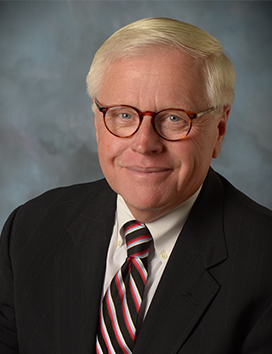With economic volatility showing little-to-no signs of abatement in the near future, naturally the discussions among senior clients seeking reverse mortgage loans turn to one of control: how to take more of it in light of these economic difficulties that will likely hit seniors on a fixed income harder than other cohorts.
To get an idea of how these conversations can be handled in the here and now, RMD turned to John Luddy — SVP of reverse lending at Norcom Mortgage in Avon, Ct. — to learn more about how a nearly 20-year industry veteran is handling yet another volatile financial environment that the 21st century has seemed rife with. Staying cognizant of clients’ sensitivities and the numerous ways they can be impacted by the current challenges are essential to generating new business in challenging times, he says.
Inflation challenges
One of the ways that reverse mortgage professionals can take the proverbial bull by the horns is by thinking more directly about the kinds of lead sources they pursue, and when they pursue certain advisors or partners that could lead to new business, Luddy says.

“Our clients should be sensitive to inflation,” he says. “I think that my colleagues in the business have to think about that, and how to reach lead sources that someone might come [if they are] being pressured by inflation.”
Financial advisors, real estate professionals or other kinds of counselors might be offering a different kind of advice than they would under normal circumstances, so remaining open to the kinds of conversations that clients themselves are likely having with these people could be a difference-maker, Luddy explains.
“Don’t chase leads, chase lead sources,” he says. “Remember, the industry believes only 5% of the people who could be helped by a reverse mortgage actually raise their hand and say [they may need one]. [Most people] don’t know that a reverse mortgage is their solution. They go to a lead source: an attorney, a financial planner, a host of people, and they may not know [how] the reverse mortgage works.”
This is where a direct dialogue with those lead sources can make a big difference, Luddy says.
“You have to teach your lead sources, ‘when you see this think of me,’” Luddy advises. “And I would tell my colleagues, start with oil companies. Certainly here in the Northeast, the price of home heating oil is a concern to our seniors. And they’re hearing from their clients [wondering if] there’s a way they can work out the payment. Those are new lead sources for us.”
Navigating the rate environment
The rate environment has been another hot topic of conversation in the mortgage industry broadly as of late, but Luddy says that it becomes more important in such circumstances to listen to the needs and concerns of the clients. Depending on those needs, they may not be as sensitive to the rate as one might think, he says.
“I think that people are more concerned about the rate than maybe they ought to be,” he says. “They might [think] that’s easy for me to say. But in the forward world, if you’ve made your career out of just refinancing and churning loans, then you have a problem. Because you don’t have a business plan that can sustain this environment.”
Luddy believes that many loan officers are thinking about precisely that since anecdotally, interest in entering reverse mortgages appears higher, he says based on his perceptions.
“In the reverse mortgage world, if you’re solving someone’s problem, you’ve got to trust me that the rate terms are not as important as you might think they would be. It’s like the closing costs: people say they can’t get over explaining the closing costs to a client. But if you told a 30-year old that they’re buying a house, with a $20,000 lien and where the closing costs [need not be paid] until they sell the house, but every time you reach into your pocket there’ll be enough money to pay your bills, who wouldn’t do that?”
Potentially a long example, but the point is that it often comes down to the way the product is positioned and the issues it might be able to help a client manage, he says.
“Properly explained, after you determine the true need, the rate is never an issue,” Luddy says. “I call clients that apply at seven and have told him that they’re now nine and five-eighths. And their only comment was ‘John, when are we closing?’”
Listen to the full discussion on the latest episode of The RMD Podcast.





